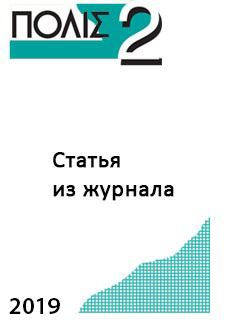Online shop of "Polis. Political Studies" Journal
We in the world, the world in us
Golubev D.S. Probability Factors of Transborder Spread of Intrastate Armed Conflicts. – Polis. Political Studies. 2019. No 2. P. 41-58 (In Russ.)
Free!
armed conflict, intrastate conflict, regional conflict, conflict clustering, conflict contagion, conflict escalation, organized violence.
The article addresses conditions that affect the probability of spatial spread of intrastate armed conflicts over established national borders. Although some specific factors of this phenomenon are relatively well studied, no prior research has yielded any integrated comprehension of interrelation between these factors and a mechanism through which transborder contagion of organized violence takes place. Moreover, most of prior studies were grounded in such operationalization of contagion that virtually corresponds to the more general process of spatial and temporal clustering of conflicts rather than to conflict diffusion. Hence, the author attempts to reveal and systematize most significant risk factors based on their correlation with potential mechanism of conflict spread. Three groups of such factors are discerned, namely: 1) ones related to the nature of an armed conflict in the source-state; 2) ones characterizing the target-state of contagion; 3) ones revealing the presence or absence of transborder conditions (flows) that function as transmission channels or mediate this effect geographically. In the empirical part of the study, based on re-operationalization of contagion aimed to disaggregate it from a more general phenomenon of clustering, the performance of these factors is tested against the set of observations of spread of armed conflicts in the “post-Socialist” macro-region of FSU and Eastern Europe over the period of 1991-2010. The author argues that, in terms of relative contribution to the process of transborder conflict contagion, the primary role must be attributed to the factors that determine channels and conditions of connection and interaction between a source-state and a targetstate. The latter include refugee flows and other physical cross-border spillovers of organized violence, transnational identity-based ties, and territorial contiguity (shared border) between the two states. Factors that characterize the nature of a source conflict and of a target-state turn out to determine a more general process of armed conflict concentration within specific “unfavorable” regions, and do not directly affect the probability of contagion.
 English
English Русский
Русский

Reviews
There are no reviews yet.